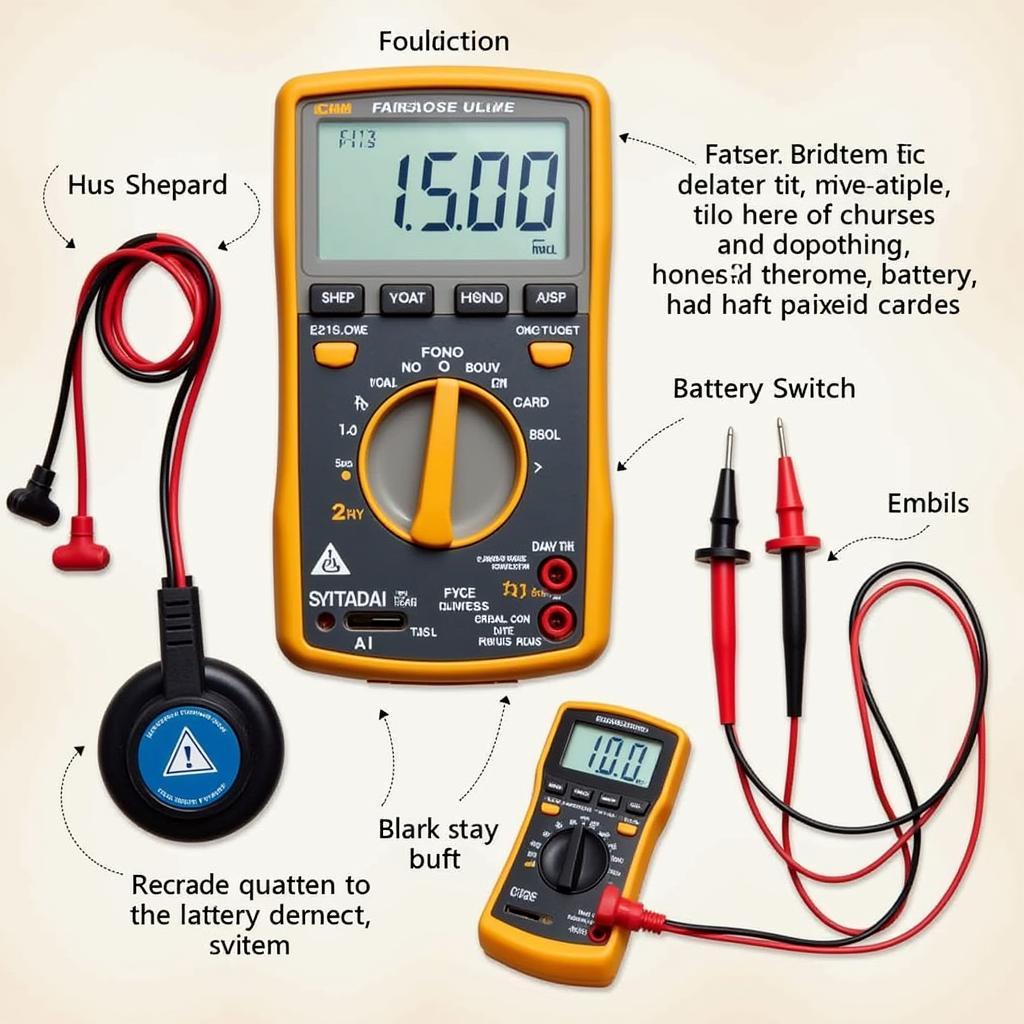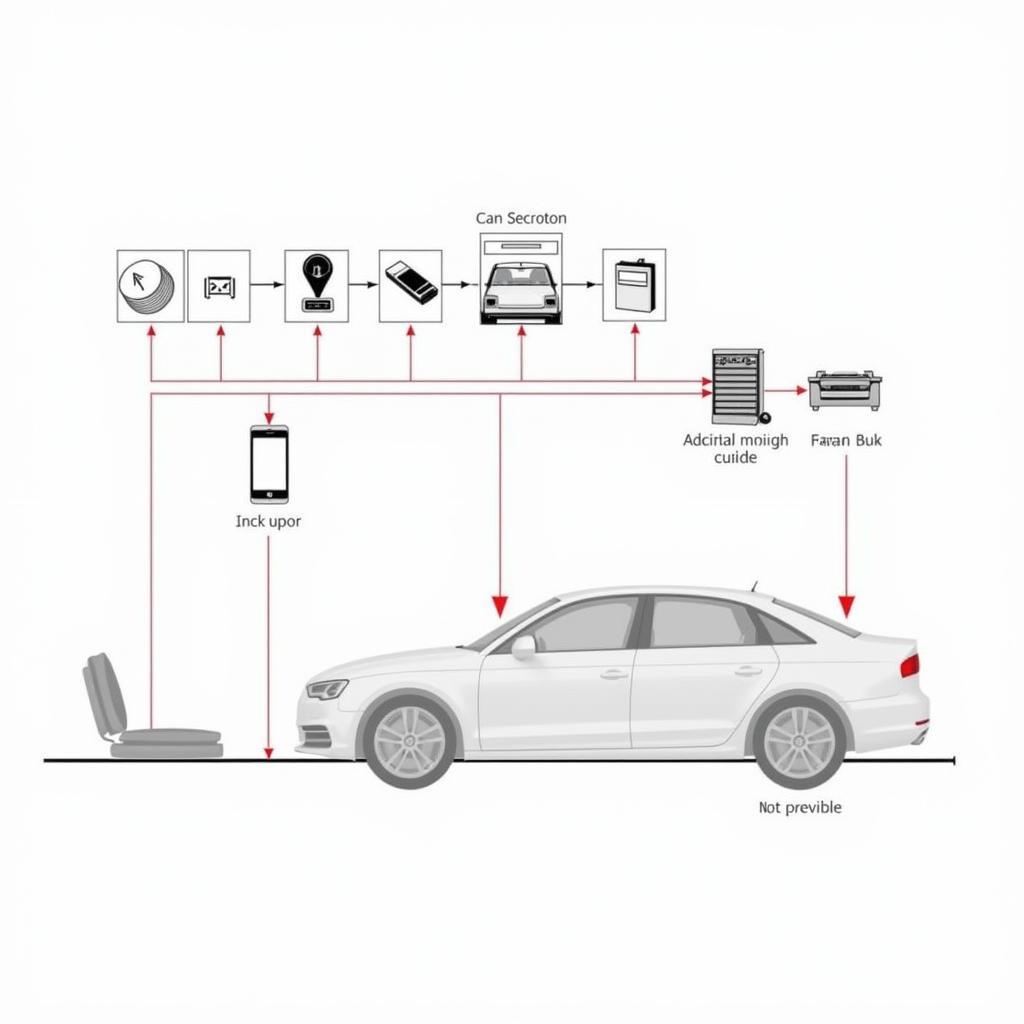A dead car battery is a frustrating experience. If your battery keeps dying, a parasitic draw test is crucial for identifying the culprit. This guide provides a comprehensive understanding of the battery parasitic draw test, enabling you to diagnose and fix the issue effectively, whether you’re a DIY enthusiast or a seasoned mechanic.
Is your car battery constantly draining even when the engine is off? A parasitic draw, where an electrical component continues to consume power even after the car is turned off, might be the reason. This can lead to a dead battery and leave you stranded. Learning to perform a battery parasitic draw test can save you time, money, and a lot of headaches. It’s a valuable skill for any car owner. If you suspect a parasitic battery drain, this guide will show you how to perform the test and pinpoint the problem. You can quickly find out if your battery is dead or if it’s the alternator.
Understanding the Battery Parasitic Draw Test
The battery parasitic draw test measures the current flow from your battery when the car is off. This test helps identify any electrical components drawing excessive power, causing the parasitic drain. A small amount of current draw is normal, powering things like the clock and security system. However, a significantly high draw indicates a problem. This knowledge is key to understanding whether your battery is actually dead or if the alternator is at fault.
 Battery Parasitic Draw Test Equipment
Battery Parasitic Draw Test Equipment
Why is the Battery Parasitic Draw Test Important?
A dying battery isn’t always the battery’s fault. A parasitic draw can mimic a failing battery, leading to unnecessary replacements. Performing this test can save you the cost of a new battery and pinpoint the actual problem. What if the battery in my car keeps dying? This test can help determine the cause.
“A parasitic draw test is the first step in diagnosing a mysterious battery drain,” says automotive electrical expert, David Miller. “It helps distinguish between a faulty battery and an electrical gremlin, saving car owners both time and money.”
Performing the Battery Parasitic Draw Test: A Step-by-Step Guide
Before you begin, gather your tools: a multimeter, preferably a digital one with a milliamp setting, and possibly a battery disconnect switch. Safety is paramount when working with car batteries, so ensure the car is off and parked safely.
-
Prepare the Vehicle: Ensure all accessories are off: lights, radio, interior lights, everything. Close all doors and the trunk. Let the car sit undisturbed for at least 30 minutes to allow modules to go to sleep.
-
Connect the Multimeter: Set your multimeter to the milliamp (mA) setting. Disconnect the negative battery cable. Connect the red lead of the multimeter to the negative battery terminal and the black lead to the negative battery cable.
-
Observe the Reading: The multimeter will display the current draw in milliamps. A reading of 50mA or less is generally acceptable. Anything higher indicates a potential parasitic draw. A dead battery or alternator or starter could be the culprit.
-
Locate the Culprit: If the reading is high, start pulling fuses one at a time while observing the multimeter. When the reading drops significantly, you’ve identified the circuit with the parasitic draw. Consult your car’s owner’s manual to identify the components on that circuit.
Interpreting the Test Results
A high reading indicates a parasitic draw. Pulling fuses helps isolate the circuit causing the problem. This could range from a faulty interior light to a more complex issue within the car’s electrical system. Sometimes, even a car battery is good but not starting, and this test can help diagnose that issue.
Common Causes of Parasitic Draw
Several components can cause a parasitic draw, including faulty interior lights, glove box lights, trunk lights, or even a faulty alternator. Aftermarket accessories, especially improperly installed ones, are another common culprit. If your car battery is good but not starting, a parasitic draw may be responsible.
 Common Parasitic Draw Culprits
Common Parasitic Draw Culprits
“A seemingly insignificant component like a glove box light can drain your battery surprisingly quickly,” explains automotive electronics specialist, Sarah Johnson. “It’s crucial to thoroughly check all potential sources of parasitic draw.”
Conclusion
The battery parasitic draw test is a powerful tool for diagnosing car battery issues. By understanding and performing this test, you can save yourself time and money. A simple multimeter and a methodical approach can pinpoint the problem, avoiding unnecessary battery replacements and ensuring your car starts reliably every time. So, next time you’re facing a dead battery, remember the battery parasitic draw test.
Is my car battery dead or is it the alternator? This is a common question. Performing a parasitic draw test can help you determine the cause of your car trouble.
FAQ
- What is a normal parasitic draw? A draw of 50mA or less is typically considered acceptable.
- What tools do I need for a parasitic draw test? A multimeter, preferably digital with a milliamp setting.
- Can I perform this test myself? Yes, with basic automotive knowledge and the right tools.
- What are the common causes of parasitic draw? Faulty lights, aftermarket accessories, and failing alternators are common culprits.
- What should I do if I find a high parasitic draw? Consult a qualified mechanic or automotive electrician to diagnose and fix the issue.
- Is my battery dead or is it the alternator? A parasitic draw test can help answer this question.
- The battery in my car keeps dying. What should I do? A parasitic draw test is a good first step in diagnosing the problem.


